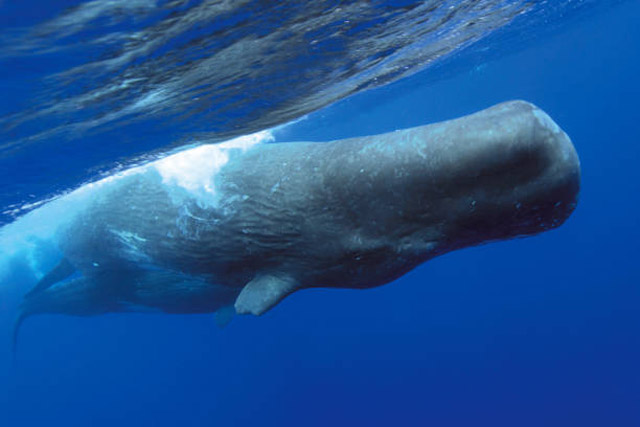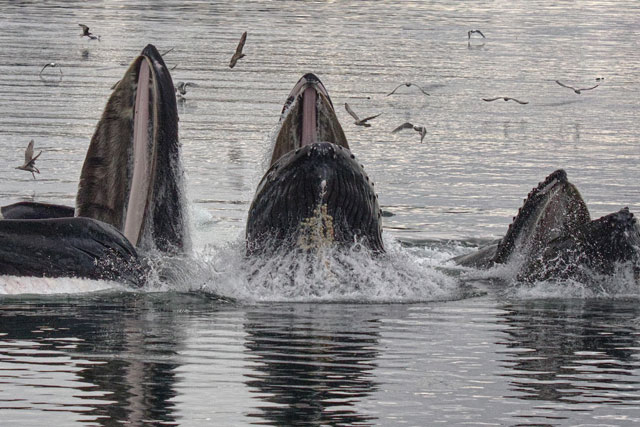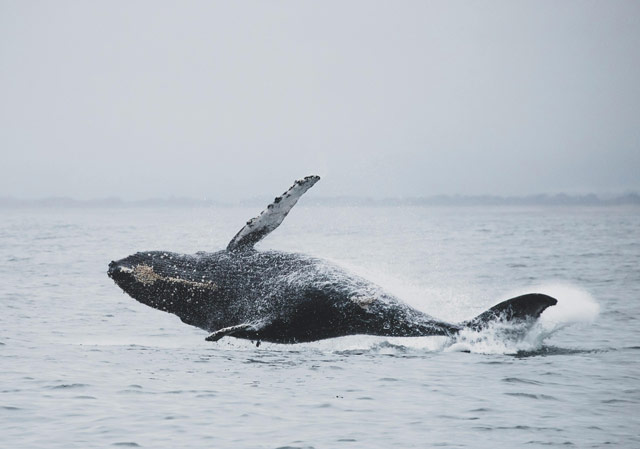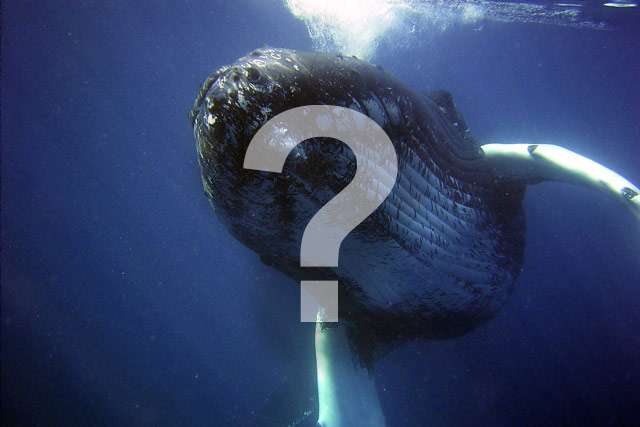Whale watching is full of surprises, but not everything you hear about whales or the activity itself is true! In this post, I’ll jump into some of the most common whale watching myths and separate fact from fiction. Whether you’re a curious first-timer or a seasoned enthusiast, these myths and truths will make your next adventure even more enjoyable and educational.
Myth #1: Whales Are Always Easy to Spot
Fact: While some whales are massive creatures, spotting them can require patience and keen observation. Factors like weather, sea conditions, and the whales’ natural behaviors play a huge role in how visible they are. On calm, clear days, you might spot a spout or tail fluke from far away, but on choppy waters, even a nearby breach might be hard to catch. Whales often spend significant time underwater, especially when foraging, so you may have to wait for them to surface. Additionally, some species, like the minke whale, are more elusive and less likely to engage in surface behaviors like breaching or tail slapping.
Modern tools like binoculars and sonar equipment used by tour operators can improve your chances, but timing and location are still crucial. Early mornings or times when the ocean is calm often offer the best visibility. By staying alert and scanning the horizon patiently, you can increase your chances of spotting
Fun Fact!
Sperm whales can hold their breath for up to two hours while diving deep into the ocean!
Pro Tip!
To improve your chances of spotting whales, choose a day with calm seas and head out during prime whale migration seasons, which run from May through November in Montauk.
Myth #2: All Whales Migrate

Fact: Not all whales migrate, and even among migratory species, patterns can vary greatly. Many baleen whales, like humpbacks and gray whales, undertake epic journeys, traveling thousands of miles between feeding grounds in colder waters and breeding grounds in warmer climates. However, not every whale follows this pattern.
For instance, toothed whales, such as orcas (killer whales), have more localized movement patterns. Resident orcas, for example, stick to specific areas year-round where their prey, like salmon, is abundant. Similarly, sperm whales, while capable of long-distance movement, often remain within certain ranges, especially males, which prefer colder waters for extended periods.
Even within migratory species, not all individuals migrate every year. Pregnant females or younger whales might have different priorities, staying closer to food sources or calmer waters. Environmental changes, such as warming oceans and shifting prey availability, can also influence migration habits, with some whales adapting their routes or schedules to changing conditions.
This diversity in whale behavior underscores the adaptability and complexity of these fascinating marine mammals. Whether they’re traveling thousands of miles or remaining local, each species has evolved to thrive in its unique ecological niche.
Fun Fact!
Humpback whales migrate over 6,000 miles annually, one of the longest migrations in the animal kingdom!
Myth #3: Whales Can Easily Hear Human Noise
Fact: Whales do hear human-made noise, but the extent to which it affects them depends on the type and frequency of the sound, as well as the specific whale species. Whales rely on sound for nearly everything—navigation, communication, finding food, and even social bonding. Their hearing is highly specialized, allowing them to pick up a wide range of frequencies.
Low-frequency sounds, like those produced by ship engines and industrial activities, can travel long distances underwater. These noises are particularly disruptive to baleen whales, such as blue whales and humpback whales, whose communication and echolocation occur at similar low frequencies. Loud, sudden noises like seismic surveys or naval sonar can be even more harmful, potentially causing physical damage to their sensitive hearing structures or prompting them to abandon feeding and breeding grounds altogether.
However, not all human-made sounds affect whales equally. Some toothed whales, like dolphins and sperm whales, are more attuned to higher-frequency sounds. While they may be less impacted by low-frequency noise, they are still vulnerable to the cumulative effects of human activity, especially when these sounds overlap with their echolocation frequencies.
Pro Tip!
When participating in whale watching tours or boating, choose operators who adhere to noise-minimizing practices, such as maintaining low speeds and using engines designed to reduce underwater sound pollution.
Myth #4: All Whale Watching Is the Same

Fact: Not all whale watching experiences are the same. There are many factors that can significantly change the quality and type of whale watching you have. From the location to the season, each factor plays an important role in what you will see and how you will see it.
For example, whale watching in Montauk, NY, offers its own unique set of opportunities compared to other locations. The types of whales that pass through the waters off Montauk can vary depending on the time of year, with humpback whales, minke whales, and even rare species like the North Atlantic right whale making appearances. The best times to go whale watching in Montauk are typically between spring and fall, when whales are migrating along the East Coast.
Another factor that affects whale watching is the type of tour you choose. There are different options available, from large boat tours to more intimate, smaller boat excursions, and even kayak tours in certain areas. The experience can vary greatly depending on the vessel size, the distance you travel from shore, and how much time you spend at different viewing spots. Smaller boats or even private charters can offer a more personalized experience, where you might get a closer look at the whales and a more knowledgeable guide.
Additionally, the weather and ocean conditions can greatly affect your experience. Calm seas make for easier whale watching, while rough waters can make spotting whales more challenging. The visibility, both in terms of sea conditions and how far you are from the whales, can also vary depending on the day and time.
Finally, whale watching is not just about seeing the whales but also understanding the environment around them. Many tours also focus on educating guests about conservation efforts, the species you are viewing, and the challenges whales face in today’s oceans. This aspect of the experience can vary greatly between tours.
Pro Tip!
Always choose an eco-friendly whale-watching operator. Not only will you learn more, but you’ll also help protect the whales and their habitats for future generations.
Myth #5: Whales Are Always Gentle Giants

Fact: While whales are often viewed as gentle giants, their behavior is more complex and can sometimes be unpredictable. These majestic creatures are generally peaceful and exhibit no interest in harming humans, but certain situations or environmental factors can trigger behaviors that appear aggressive or defensive.
Some whale species, like humpback whales, are renowned for their protective instincts, especially toward their young. A mother humpback will go to great lengths to shield her calf from perceived threats, even confronting predators like orcas. Whales may also display defensive behaviors if they feel cornered or startled, such as slapping their tails (known as lobtailing) or breaching the surface in powerful leaps. These actions are awe-inspiring to witness but serve as clear signals to keep a respectful distance.
Additionally, some species—like male sperm whales—are known to become territorial during mating season. They may exhibit dominance displays to deter rivals, although such behaviors are primarily directed toward other whales, not humans. Despite these moments of heightened energy, whales are not inherently aggressive toward people and often demonstrate remarkable curiosity instead.
It’s also important to remember that their immense size alone can pose risks. A playful breach or slap of a massive fluke can unintentionally cause harm to nearby boats or individuals. This is why respecting whale watching guidelines and keeping a safe distance is crucial for both their safety and ours.
Fun Fact!
Fun Fact #3: Blue whales, the largest animals on Earth, can weigh as much as 33 elephants combined! Despite their size, they primarily eat tiny krill.
Myth #6: Whales Are Solitary Creatures

Fact: While some whales are more independent, many species are incredibly social and form complex relationships within their pods. Whales’ social structures vary significantly between species, showcasing fascinating dynamics that highlight their intelligence and adaptability.
For example, orcas (killer whales) are famously social and live in highly structured pods that can include up to 40 individuals. These pods are led by a matriarch, typically the oldest female, and exhibit remarkable cooperation when hunting. Pods even have unique vocalizations—like family dialects—that serve as identifiers, much like our accents. Orcas stay with their family groups for life, emphasizing the depth of their social bonds.
Sperm whales also form close-knit groups, with females and calves staying together in family units while males roam more independently. These family groups are essential for raising young and protecting calves from predators. Male sperm whales, though solitary for much of their adult lives, sometimes form “bachelor pods,” gathering with other males for companionship and hunting.
Even species considered more solitary, like blue whales, occasionally come together to form loose aggregations in feeding grounds. These temporary gatherings allow them to exploit abundant food resources like krill. Baleen whales, such as humpbacks, exhibit playful and cooperative behaviors when feeding, including bubble-net feeding, where multiple whales work together to corral fish.
Interestingly, some whales form temporary “friendships” during migration. These bonds, while short-lived, demonstrate a willingness to socialize and travel together for mutual benefit. The notion that whales are always solitary is an oversimplification; their social lives are as varied and dynamic as the ocean they inhabit.
Fun Fact!
Killer whales, or orcas, live in matriarchal pods led by the oldest female. These pods can stay together for their entire lives!
Myth #7: You Can Predict Whale Breaches

Fact: While certain behaviors and environmental conditions might make a breach more likely, the exact moment a whale will breach remains unpredictable and adds to the thrill of whale watching. Breaching is one of the most dramatic and mysterious behaviors in the animal kingdom, and scientists still debate the exact reasons whales engage in it.
Breaches can occur for several reasons: communication, play, feeding-related actions, or even removing parasites. Humpback whales, in particular, are famous for their frequent and acrobatic breaches, and their displays often seem playful or social. Sometimes, breaches are observed during courtship displays, where male whales use the spectacle to demonstrate their strength and vigor.
Environmental factors like a calm sea or an active feeding ground may increase your chances of witnessing a breach. For instance, in Montauk, during feeding season, you might see humpbacks breaching after a successful hunt, possibly as a way to celebrate or signal to others in the pod.
However, the element of unpredictability is what makes spotting a breach so exciting. A whale may breach once or perform a series of leaps, leaving spectators awestruck. The sheer power it takes for a massive whale to propel its body out of the water—sometimes reaching heights of up to 30 feet—is a testament to their strength and agility.
For whale watchers, patience is key. Observing other surface behaviors like tail slaps or pectoral fin slaps can indicate an energetic whale, increasing the likelihood of a breach. But even seasoned experts can’t predict the exact timing of this awe-inspiring event.
Fun Fact!
Humpback whales are famous for their dramatic breaches, leaping out of the water and landing with a splash that can be heard from a mile away!
Myth #8: Whales Have Poor Eyesight
Fact: Fact: Contrary to popular belief, whales have surprisingly good eyesight adapted to their aquatic environment. Their eyes are specifically designed to function effectively both underwater and above the surface, making them well-equipped for their diverse habitats.
Underwater, light doesn’t travel as far, especially at the depths many whales frequent. To overcome this challenge, whales have adapted by having large eyes relative to their body size. This size allows them to collect as much light as possible, giving them excellent vision in dim, murky waters. Their retinas are densely packed with rod cells, which are highly sensitive to low light, making them proficient at seeing in the deep ocean’s twilight zones.
Interestingly, whales also possess a reflective layer behind their retinas, called the tapetum lucidum. This feature, similar to what cats and other nocturnal animals have, enhances their ability to see in low-light conditions by reflecting light back through the retina, effectively giving them a second chance to absorb light.
Above water, whales can see quite well too. Although their eyes are positioned on the sides of their heads, some species, like humpback whales, can rotate their eyes slightly forward, giving them better binocular vision. This ability allows them to assess their surroundings both in water and at the surface, including observing nearby boats or breaching companions.
However, whales are not as reliant on eyesight as humans are. Their primary mode of sensing the world around them is through echolocation and acoustic signals. Toothed whales like orcas and sperm whales are masters of echolocation, using sound to “see” their environment with incredible precision, even in total darkness.
Pro Tip!
When observing whales, wear brightly colored clothing. Some species, like humpbacks, are curious and might approach to investigate unusual colors or movements.
Myth #9: Whales Are Fish

Fact: Whales are not fish; they are mammals, just like humans, lions, or elephants. Despite living their entire lives in water and resembling giant fish in appearance, they have key characteristics that set them apart and firmly classify them as marine mammals.
One of the most obvious differences is how whales breathe. Unlike fish, which extract oxygen from water through gills, whales have lungs and must surface to breathe air through their blowholes. This is why you’ll often see them coming to the surface to exhale and inhale before diving back down. Their breathing patterns are deliberate, not automatic, which means they consciously decide when to surface for air.
Another key difference lies in their reproduction. Whales give birth to live young, not eggs like fish. Mother whales nurse their calves with milk, a hallmark of mammals. This close mother-calf bond is also a sign of their intelligence and social structure, which differs greatly from the behavior of fish.
Additionally, whales are warm-blooded, maintaining a constant body temperature regardless of the water temperature. They achieve this through a thick layer of blubber that insulates their bodies in cold waters, a feature absent in fish.
Finally, while fish have scales, whales have smooth, rubbery skin. Beneath their skin, they have bones structured similarly to terrestrial mammals, especially in their fins, which contain finger-like bones, a nod to their evolutionary land-dwelling ancestors.
Fun Fact!
Whales share a unique evolutionary history with land-dwelling animals and evolved back into the ocean over millions of years.
Tips for Busting Whale Watching Myths
From Shore
- Research Before You Go: Read up on the whales commonly seen in Montauk and their behaviors to better understand what you’re observing.
- Bring Binoculars: Sometimes, whales surface farther from shore. Binoculars can give you a closer look at their fascinating movements.
On a Boat
- Listen to the Experts: Naturalists on board often explain whale behaviors and dispel common myths during tours.
- Be Patient: Whales are wild and don’t operate on a schedule. The wait can make the moment they appear even more magical.
Why Knowing Whale Facts Matters
Understanding the truth about whales enhances your whale-watching experience and promotes respect for these incredible creatures. Whether you’re debunking myths about whale communication or learning fascinating migration facts, your knowledge can inspire others to appreciate and protect these incredible animals.


